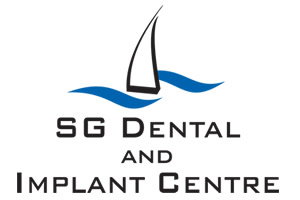Floss, Waterpik Or Interdental Stick?
A Burton dental hygienist looks at the pros and cons of these oral health accessories
There has recently been an increase in TV advertisements for toothpastes and other products that target gum disease. This is a positive move as it will hopefully make people more aware of how serious gum disease can potentially be. As a dental hygienist at Mike Allen’s, my role is to help our patients have healthy gums, both by professionally cleaning them and offering advice on how they can better take care of them at home.
One of the main pieces of advice we give to those patients who don’t already do so is to use dental floss. It is then a very common response to be told that they have tried and couldn’t do it or found it difficult and gave up. Some have tried alternative methods such as interdental sticks or waterpiks and found these easier to use.
Given that there are now alternatives to dental floss, we thought that we would take a look at these and see how they compared to traditional floss.
Dental floss
Before we look at the alternatives, it is worth discussing dental floss. Most local dentists and hygienists will still recommend that you use this as the first choice. It is a traditional and long standing method that is very effective if used correctly. It is cheap and very flexible for getting into those difficult spaces. Given its low cost, we do recommend that you try this first of all and we are always happy to show you how to do so if you find it a little difficult. A little patience may be required but once you have mastered it, cleaning between your teeth with floss should only take a few minutes each day.
Interdental sticks
Traditionally called ‘toothpicks’ and not to be confused with interdental brushes which we will look at in a minute. These are traditionally made from wood and are a little like cocktail sticks, with a pointed end to make it easier to get between the teeth.
They have their uses in that they can be taken out with you if you are going to a restaurant and can help to remove larger pieces of food that get trapped between the teeth and, perhaps, look unsightly. By and large though, they are limited in effectiveness as they will not remove smaller pieces as well as other methods. The pointed end also means that there is a risk of damaging the gum and you may also push small pieces of food beneath the gum line rather than removing them. So please take care.
Interdental brushes
These can come in a number of shapes and designs but all have one thing in common. At the end of each ‘brush’ is a set of fine bristles which are supposed to be small enough to reach between the teeth. These do offer better cleaning than an interdental stick and may suit some patients perfectly well. The bristles can help to remove small particles of food as well as some bacteria. The main disadvantage of these is that they may not be able to reach between all of the teeth.
If you have an even and nicely spaced set of teeth, these may be for you. Most of us though probably have some teeth that are close together or perhaps even overlapping. Whilst this could be corrected through orthodontic treatment, many patients may not have gone down this path. If you have teeth that are close together or are overlapping, the bristles will probably not be able to get between these teeth and it is likely, if you use these brushes, that some teeth will get missed.
Waterpiks
These are a relatively modern invention and are aimed at those who understand the importance of cleaning between their teeth but don’t like, or can’t use, dental floss. In essence, these use fine powerful jets of water which are ‘blasted’ between the teeth, aiming to remove food and other debris.
One area where these might be particularly useful is for patients that are wearing braces that use the traditional wire and brackets type system. Food can easily become trapped in these and that can present problems for cleaning using traditional methods. The water can be blasted around the wiring and offers a good way to keep these clean. They may also be useful for people with arthritis and similar problems and may be easier to use, in these cases, than dental floss.
Some users do find problems with these though. One of the biggest being ‘aim’. If you don’t direct the jets correctly, the streams of water can hit the throat and may cause you to gag. Misdirected water jets can also splash the face, clothes and any surrounding items and can, potentially, be quite messy. Finally, although these might work well on the front teeth, cleaning the rear teeth with these is likely to prove more difficult, possibly resulting in gum disease and tooth decay if neglected.
Overall then, we still recommend that our Burton patients start with dental floss. It is cheap, effective and easy to use with a little practice. We also always encourage you to see myself or one of the other hygienists at Mike Allen’s Dental Practice for a regular, professional clean and advice. This also presents a good opportunity for you to ask us how to use floss correctly. We will be happy to demonstrate to help you establish an effective gum care regime at home.
To book an appointment to see the hygienist or dentist at our Burton clinic, please call us on 01283 845345.
